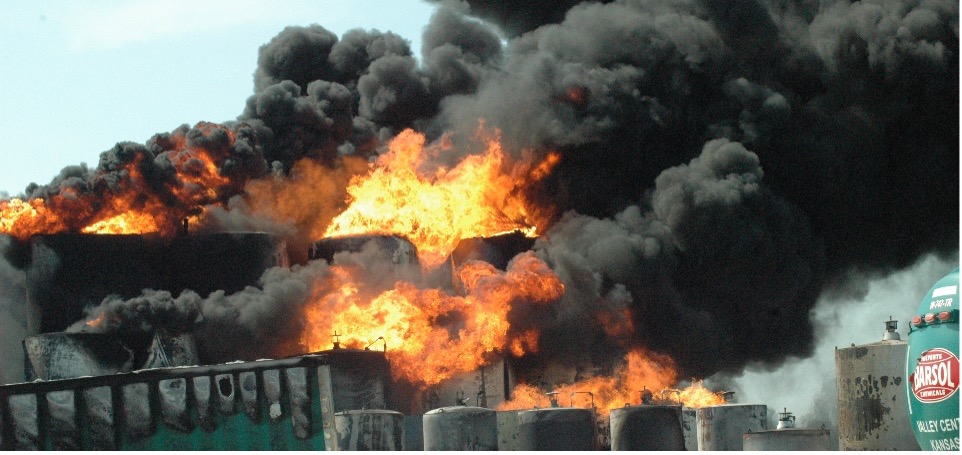Plant Crisis Management
Introduction
A crisis in an industrial facility can take the form of many possibilities including but not limited to:
- Release of chemicals onsite or offsite – close proximity
- Fire onsite or off-site – close proximity
- Derailment involving chemical releases, property/vehicle damage, and fatalities
- Highway transport of chemicals involving chemical releases, property/vehicle damage, and fatalities
- Bomb Threat
- Violence in the workplace
- Act of Terrorism
- Severe Weather
- Other acts of God
- Pandemic outbreak
- Labor issues
- Customer based issues (delivery dates, quality, etc.)
The initial response dictates the success of the outcome. Facilities have the potential to experience any of the above incidents. Therefore, the primary goal of any response will be personnel safety.
OSHA requires workplaces to establish actions to protect workers from an applicable crisis as defined as emergencies in the OSHA standards. Employers are required to maintain an Emergency Action Plan that provides policies and procedures to protect workers during an emergency. Every workplace is required to have an emergency action plan (EAP).
If fire extinguishers are required or provided in your workplace, and if anyone will be evacuating during a fire or other emergency, then OSHA’s [29 CFR 1910.157] requires you to have an EAP.
The only exemption to this is if you have an in-house fire brigade in which every employee is trained and equipped to fight fires, and consequently, no one evacuates.
In most circumstances, immediate evacuation is the best policy, especially if professional firefighting services are available to respond quickly. There may be situations where employee firefighting is warranted to give other workers time to escape, or to prevent danger to others by spread of a fire. In this case, you as the employer are still required to have an EAP.
Types of Crises
There are two categories of crises, they are sudden and smoldering. The environmentally related examples would be considered sudden but may ultimately become smoldering if not efficiently addressed. The outcome could be as severe as to involve fatalities or extensive damage to property, or as minimal as a false threat.
The smoldering events can start out as rather minimal but poor management of the issue may lead to a catastrophe. An example is an employee that repeatedly drives the forklift too fast and reckless at that. If the employee is not disciplined correctly and behavior changed then it could end in a possible employee fatality which is devastating to any workforce and causes great risk exposure.
Key components of an Emergency Action Plan
No two EAPs will be identical. Building layouts, hours of operation, personnel qualifications, and more will have an impact on the particulars of an EAP. There are, however, certain universal components that should be included in most EAPs, including:
- Evacuation procedures, escape routes, and floor plans
- Reporting and alerting authorities
- Alerting staff and visitors of an emergency
- Accounting for people after implementing an EAP
- Notifying parents, guardians, or next of kin
- Identifying a media contact person
- Training new staff
Critical Communications
Emergency Telephone Numbers
Fire Department – 911
Police Department – 911
EMT Service – 911
Power Company
Emergency Mgmt. Agency
Staff Emergency Numbers
President
Director of Operations
Emergency Coordinator
Critical Equipment Operators
RESPONSIBLE FOR CALLING FIRE DEPARTMENT & MANAGEMENT – Maintenance
RESPONSIBLE FOR TURNING OFF NATURAL GAS VALVE – Maintenance
RESPONSIBLE FOR TURNING OFF PROPANE GAS MAIN VALVE – Maintenance
RESPONSIBLE FOR TURNING OFF MAIN CIRCUIT FOR ELECTRICITY – Maintenance
RESPONSIBLE FOR TURNING OFF OTHER COMPRESSED GAS VALVE – Maintenance
PROCESS OF HANDLING PLANT EMERGENCIES
EMERGENCY COORDINATOR – 24-Hour contact number
FIRE EXTINGUISHERS SPILL CONTROL KITS FIRE ALARMS
The Emergency Coordinator or his/her designee must respond to any emergencies that arise. The applicable responses are as follows:
FIRE: Call Fire Department or attempt to extinguish fire using a fire extinguisher.
SPILL: Contain the flow of hazardous waste to the extent possible, and as soon as is practicable, clean up the hazardous waste and any contaminated materials or soil.
In the event of a fire, explosion, or other release which could threaten human health outside the facility or when the generator has knowledge that a reportable quantity spill has reached surface water, the Chemical Safety Board is required to be notified of releases. Hazardous substance releases to the environment in amounts exceeding the specific “Reportable Quantity” (RQ) require notifying the facility to report to the National Response Center (NRC) the details of the release. The total release is calculated based on time, chemical behavior, and plume, including evaporation, adsorption into the ground, and liquid discharged offsite.
The National Response Center can be reached at 1-800-424-8802 (24 hours a day).
The following information must be reported for such a release:
1) Name, Address, and Facility USEPA Identification Number.
2) Date, time, and type of incident (e.g., spill or fire).
3) Quantity and type of hazardous waste involved in incident.
4) Extent of injuries, if any.
5) Estimated quantity and disposition of recovered materials, if any.
Spencer-SHE has been providing Safety, Health, and Environmental Compliance Guidance since 1980. We assist clients with evaluation, development, and implementation of emergency action plans and fire prevention plans.
Contact us here to help you to develop and maintain a safe and healthy workforce.
Sources:
https://www.thesilverlining.com/safety-tips/developing-an-emergency-action-plan
https://www.osha.gov/etools/evacuation-plans-procedures/need

